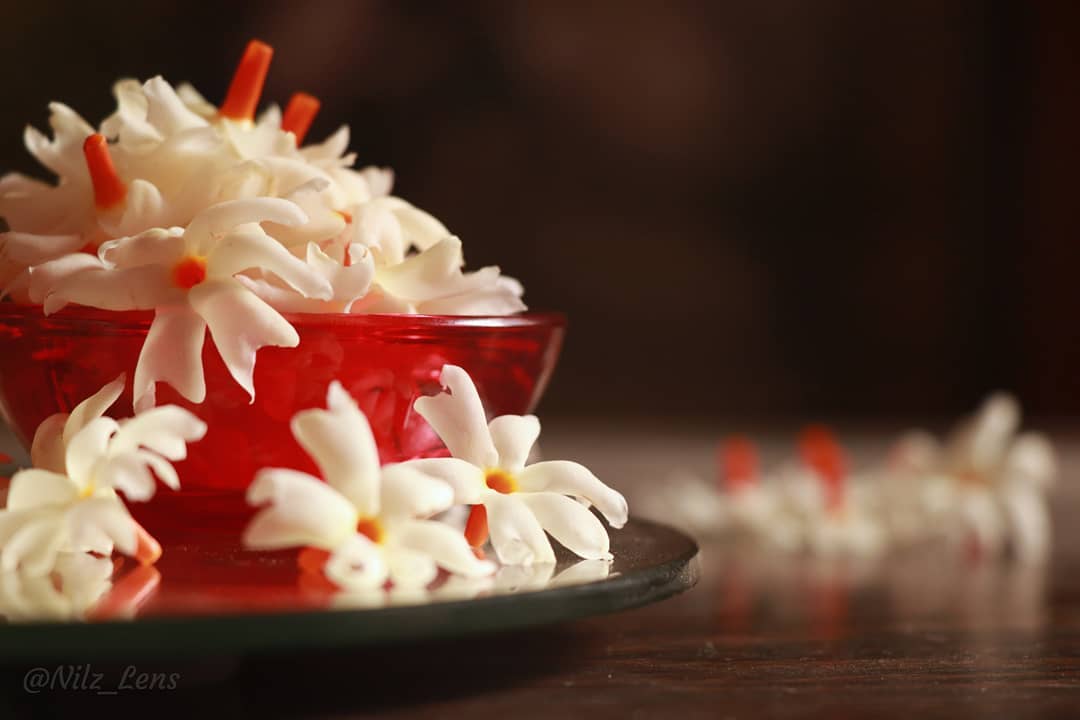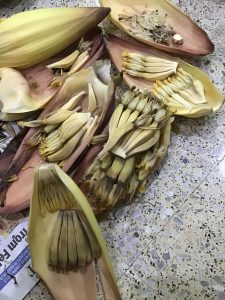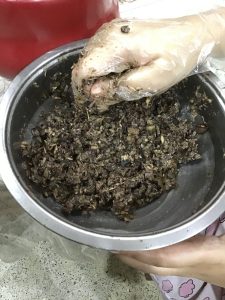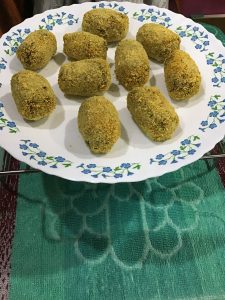To any Bengali residing across the globe, Durga Puja is an emotion! They look forward to this auspicious occasion every year. Even crazier, before it’s arrival, many Bengalis start looking up the google calendar, trying to find out the following year puja dates. Just two words, “Ma aschen” (Durga Ma is arriving) elevates their spirits, brings about sheer joy and they instantly start planning for the ceremony. There is one more sentiment that Bengalis are often associated with, and that is their obsession with food. Being a hardcore Bengali myself, I can assure that we have tastefully earned the title of being called ‘foodies.’
While I sit by my window penning down this article, I can feel the essence of Durga Puja setting in. We are already in the auspicious phase of ‘Debipakkho’ (the weeklong time between Mahalaya and Dussehra) and Pujo is just round the corner. I have observed that all Bengali ceremonies, from birth to death, find their spiritual roots in the fruit commonly known as the ‘banana.’ Each part of the banana plant, from its budding stage to its stage of maturity, is used not only for holy purposes but also to prepare mouth-watering delicacies that are traditional to Bengali cuisine. The banana stem, the leaf, the flower and the fruit easily find their place in a Bengali kitchen almost every day. Even Durga Puja remains incomplete without the ‘kola bou,’ (literally, the banana bride)! In the early hours of Maha Saptami, a whole banana plant is bathed in the holy Ganges, decked up in a traditional red bordered white or yellow ‘tant’ sari, like a married Bengali lady, and brought home with a lot of respect and reverence.
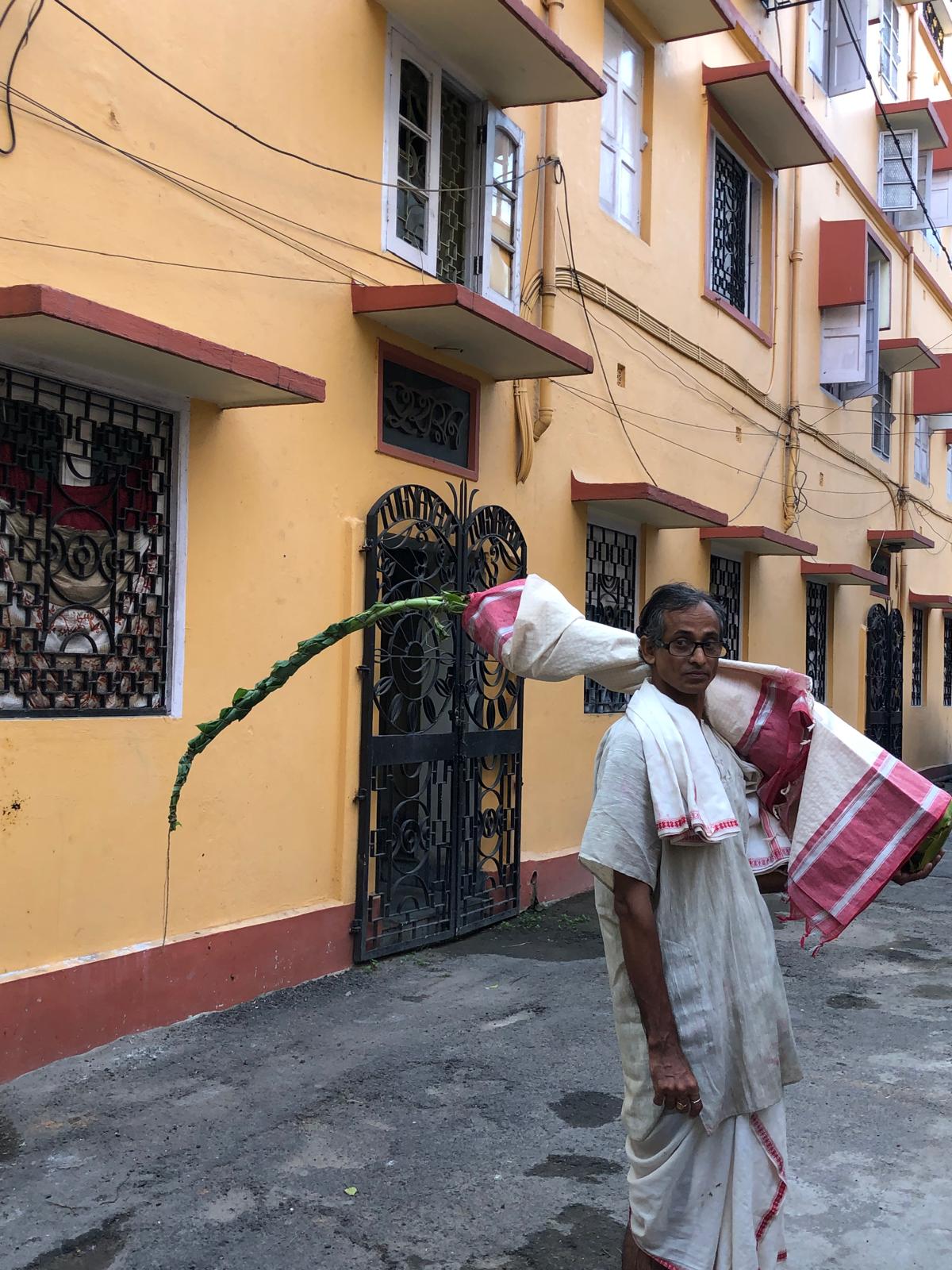
The ‘kola bou,’ also known as the ‘Nabapatrika’ (nine plants) symbolically represents the nine forms of Goddess Durga. It is placed on the right side of Lord Ganesha for the entire duration of the Puja.
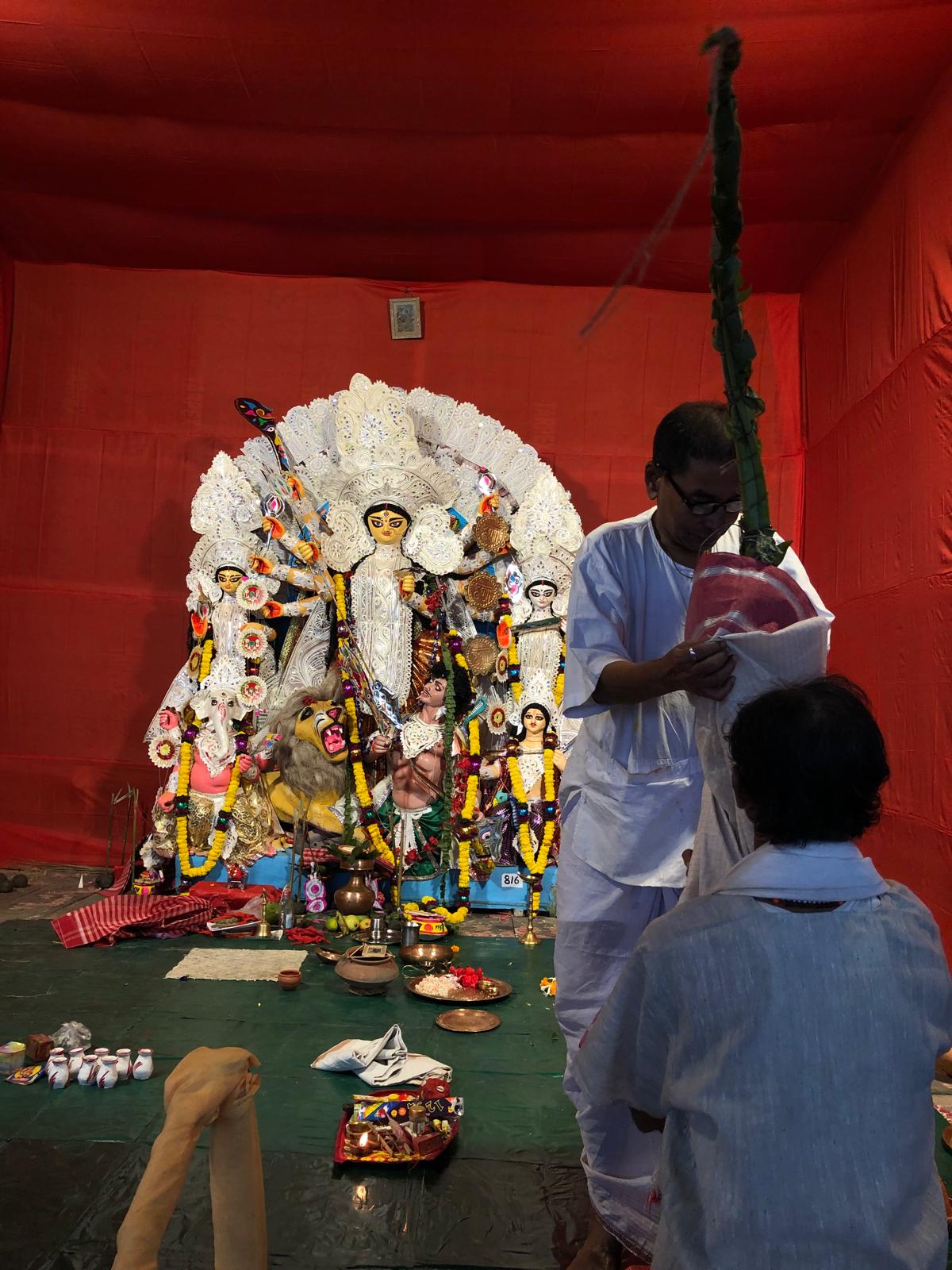
The occasion of Durga Puja finds offerings of the banana in its various forms – in the form of both raw and ripe fruit and in the form of cooked vegetable.
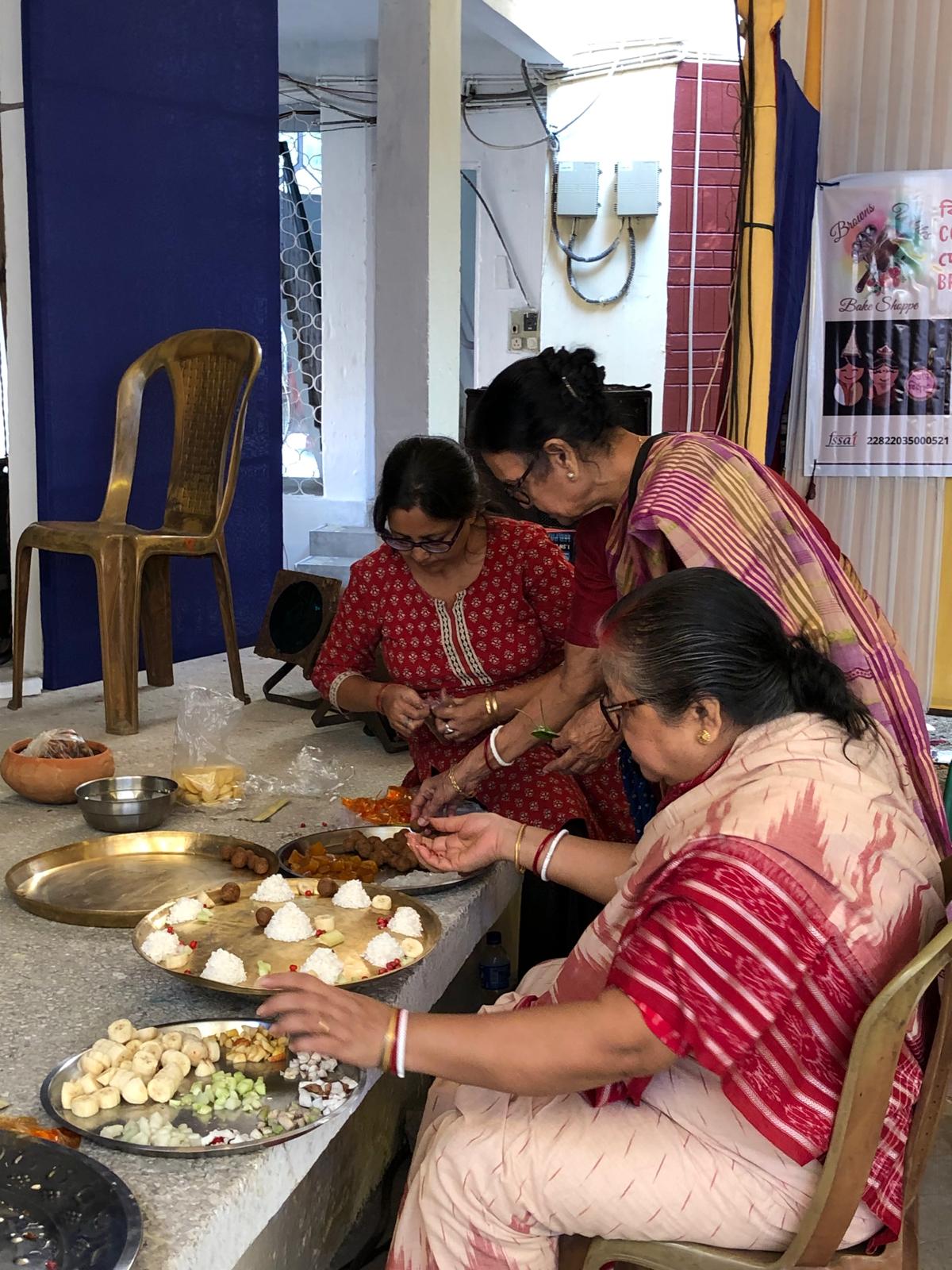
The celebratory offering of cooked food to Goddess Durga is called ‘bhog’ which comprises of at least four kinds of cooked rice – ‘khichudi anno’ (combination of rice and pulses), ‘anno’ (plain rice), ‘pushpanno’ or ‘pulao’ (saffron rice with dry fruits), and ‘paramanno’ or ‘payesh’ (rice cooked in milk). This is accompanied by an array of fried vegetables (in the odd numerals of five, seven or nine, etc.); other traditional vegetable curries like ‘labra’ and ‘ghonto’ that are made using thor (banana stem), mocha (banana flower) and other vegetables; chutneys and various kinds of hand-crafted sweets.
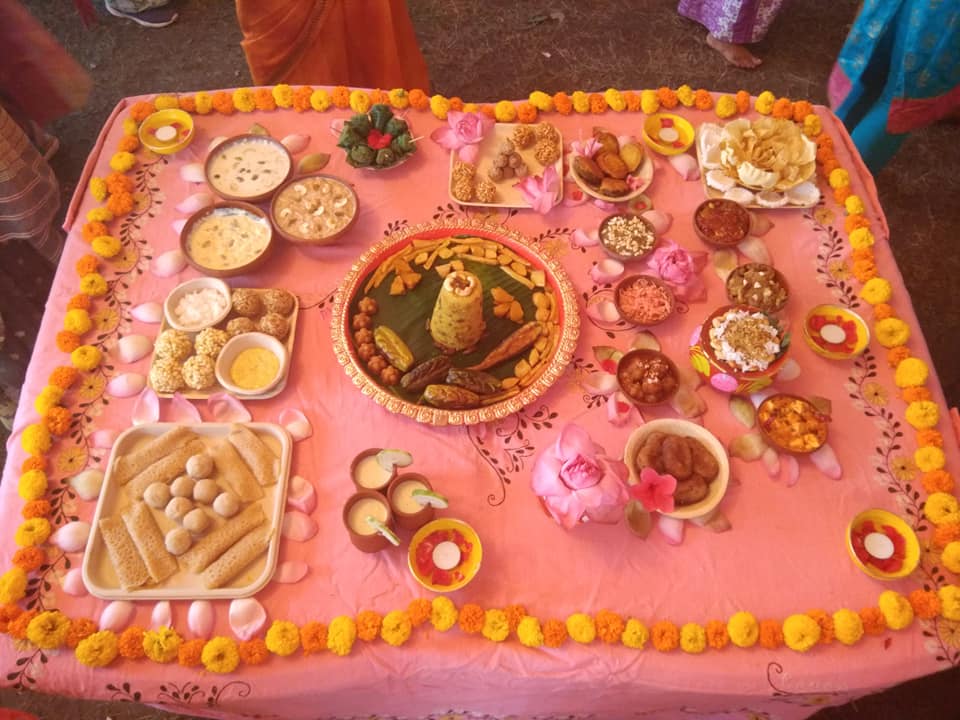
This ‘bhog nibedan’ (lunch offering) is done with a lot of pomp and grandeur every noon on all three days of Durga Puja, that is, Maha Saptami, Maha Ashtami and Maha Nabami. After the offering is completed, the same is distributed among the people and everyone who attends the Puja gets the opportunity to taste Ma’s ‘bhog proshad.’ Growing up in the heart of Kolkata city, my type of Durga Puja has neither been situated in the crowded pandals nor queued up outside restaurants. I have had the privilege of being actively involved in what we call as a ‘barowari puja.’
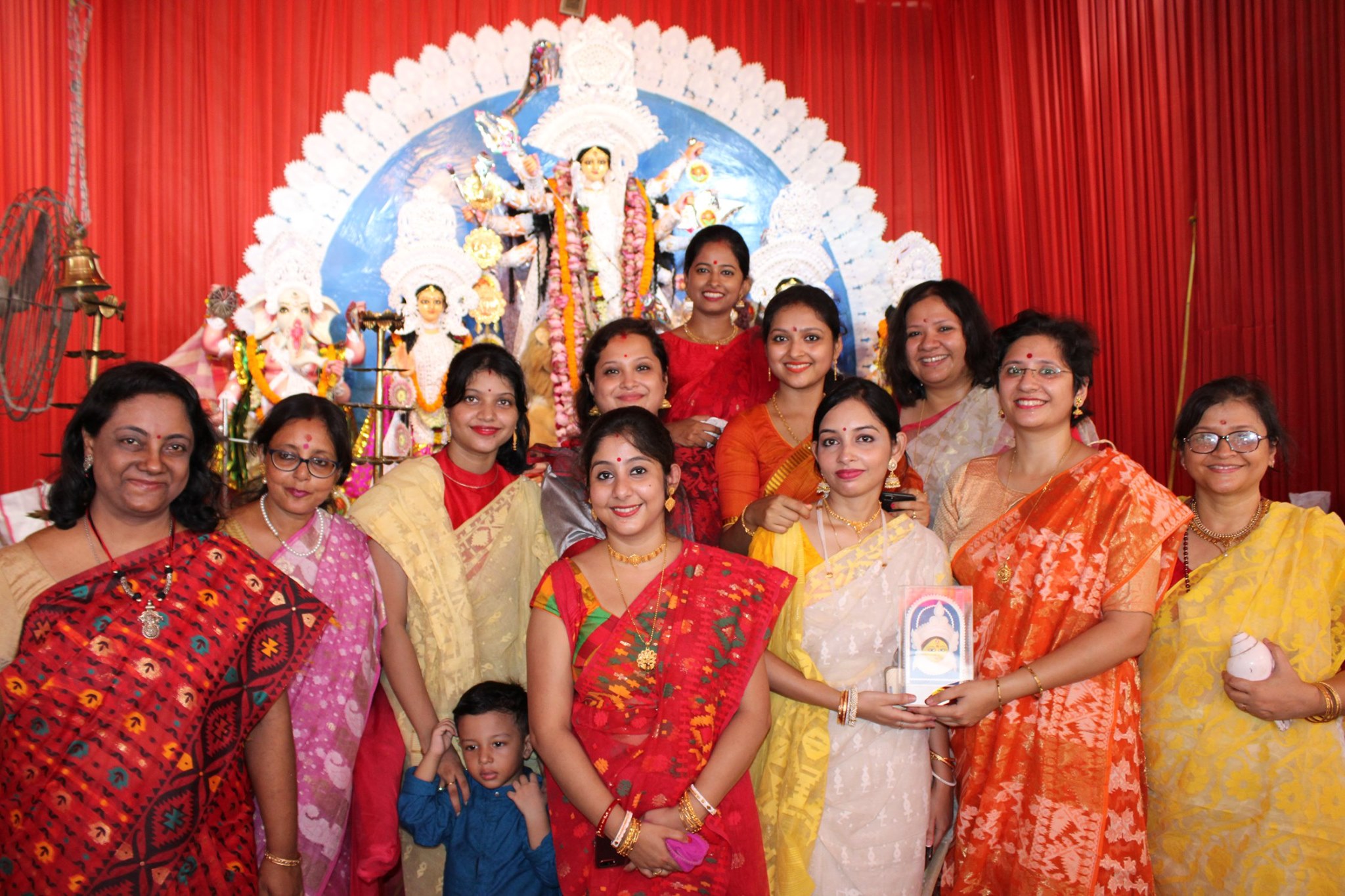
People from all age groups have sincerely involved themselves to make this entire ceremony a grand success every year. Here, I have witnessed and learnt the subtle art of passing on the traditions and cultural practices from one generation to the next.

At home, the kitchen has been one of my favourite places, since the time I baked my first cake with my mother. I was possibly only five or six years old then. I always feel that it is important to learn certain cultural practices from our elders and then pass those on to our children. At least, that would help us to preserve those delicate traditions for a lifetime and beyond.

Therefore, upholding this spirit of passing on experienced knowledge, I take this opportunity to share with all the readers, one of the traditional recipes of Bengal that has been handed down by my great maternal grandmother. The sticks are about to beat on the ‘dhaak’ (Bengal drum), Durga Ma has begun her journey from the Kailash Parbat and the auspicious banana is making its way into business. Today, I am sharing the recipe of ‘Mochar Chop’ (flavourful fried balls made from the banana flower) that has continued to win the hearts of many.
Mochar Chop
Ingredients
1 Whole Banana Flower (Mocha) – cleaned and finely chopped
2 Medium-sized Potatoes – peeled and diced
1.5 tsp Ginger Paste
0.5 tsp Chilli Paste
1.5 tsp Cumin Powder
1 tsp Coriander Powder
0.5 tsp Black Pepper Powder
2-3 Bay Leaves
2 Dried Red Chillies
0.5 tsp Cumin Seeds
0.5 tsp Garam Masala – roasted and powdered
Salt to Taste
1 tsp Sugar
1 tbsp Coconut – finely chopped
1 tbsp Fried Peanuts
1 tbsp Raisins
0.5 cup Desiccated Coconut
Cornflour – for batter
Bread Crumbs – for coating
2 tbsp Mustard Oil – for cooking the mixture
More Mustard Oil – for deep frying
Method
Steam the banana flowers in half cup of water in a pressure cooker with 2 whistles. Drain, squeeze and remove excess water, then lightly mash and keep aside.
Fry the potatoes with little salt. Keep it covered while frying. Once soft, remove from heat, mash and keep aside.
In a wok or kadhai, heat some mustard oil. Add in the cumin seeds. Once they start spluttering, add in the bay leaves and dried red chillies. Stir in the desiccated coconut and saute until the coconut releases a beautiful aroma. Stir in the mashed banana flower. Add in all the spices and seasoning except the garam masala powder and sugar and stir well. Cook the mixture at medium to low flame, stirring occasionally until the mocha becomes soft and the mixture looks dry. Add the raisins, fried peanuts, coconut, sugar and the garam masala powder. Mix well and turn off the flame.
Cool the mixture slightly and add the mashed potatoes. Mix well. Using clean hands, make egg-sized balls out of the mixture. Coat the balls in the cornflour batter (made using cornflour, pinch of salt and water, resembling a paste). Immediately coat them in bread crumbs. Prepare all the balls in a similar fashion and keep them chilled until frying.
Heat oil in a wok or kadhai, deep fry the balls and serve them hot with mustard sauce. Enjoy!

